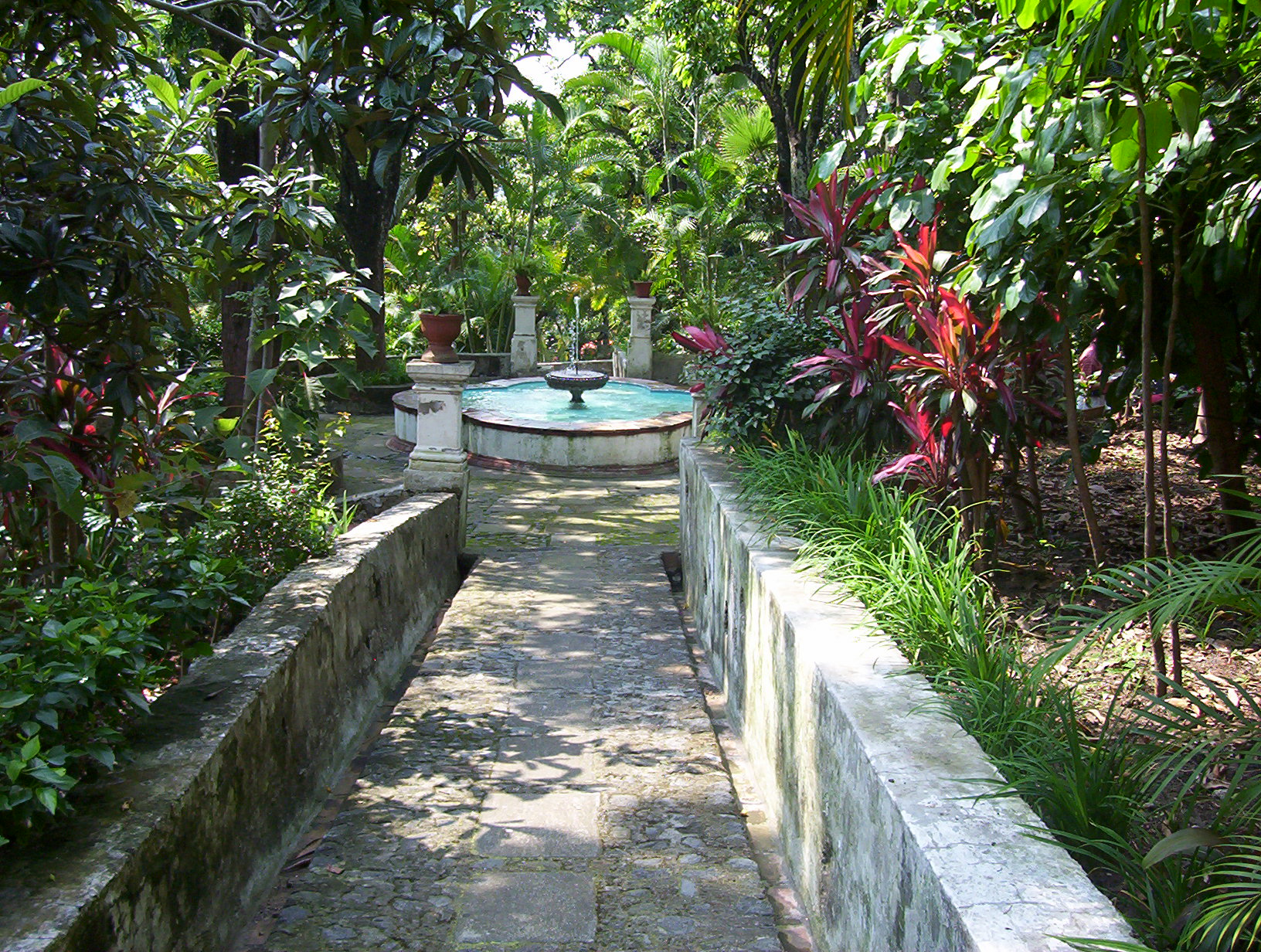|
XHCUM-FM
XHUAEM-FM, known as Radio UAEM, is a radio station serving Cuernavaca, Morelos. It is owned by the Universidad Autónoma del Estado de Morelos and has statewide coverage with repeaters installed at the UAEM preparatory schools in Jojutla and Cuautla. History XHUAEM-FM received its permit in February 2000 and signed on July 14 of that year. The additional permits were received later in 2000; XHCUM-FM Cuautla launched on August 14, 2003, and XHJJM-FM in Jojutla took to the air on January 24, 2005. Radio UAEM was launched under rector Gerardo Ávila García and founding station director Francisco Orozco Jiménez. After René Santoveña Arredondo was elected UAEM rector in December 2000, the station became known as UFM Alterna, a moniker that would be used until 2013 when it returned to "Radio UAEM" in a bid to emphasize its connection with the university. The new university outlet broadcast classical and alternative music, alongside a variety of locally produced and internationa ... [...More Info...] [...Related Items...] OR: [Wikipedia] [Google] [Baidu] |
Cuernavaca
Cuernavaca (; nci-IPA, Cuauhnāhuac, kʷawˈnaːwak "near the woods", ) is the capital and largest city of the state of Morelos in Mexico. The city is located around a 90-minute drive south of Mexico City using the Federal Highway 95D. The name ''Cuernavaca'' is a euphonism derived from the Nahuatl toponym and means 'surrounded by or close to trees'. The name was Hispanicized to ''Cuernavaca''; Hernán Cortés called it ''Coadnabaced'' in his letters to Charles V, Holy Roman Emperor, and Bernal Díaz del Castillo used the name ''Cuautlavaca'' in his chronicles. The coat-of-arms of the municipality is based on the pre-Columbian pictograph emblem of the city which depicts a tree trunk () with three branches, with foliage, and four roots colored red. There is a cut in the trunk in the form of a mouth, from which emerges a speech scroll, probably representing the language Nahuatl and by extension the locative suffix , meaning 'near'. Cuernavaca has long been a favorite escape fo ... [...More Info...] [...Related Items...] OR: [Wikipedia] [Google] [Baidu] |
Morelos
Morelos (), officially the Free and Sovereign State of Morelos ( es, Estado Libre y Soberano de Morelos), is one of the 32 states which comprise the Federal Entities of Mexico. It is divided into 36 municipalities and its capital city is Cuernavaca. Morelos is a landlocked state located in South Central Mexico. It is bordered by Mexico City to the north, and by the states of México to the northeast and northwest, Puebla to the east and Guerrero to the southwest. Morelos is the second-smallest state in the nation, just after Tlaxcala. It was part of a very large province, the State of Mexico, until 1869 when Benito Juárez decreed that its territory would be separated and named in honor of José María Morelos y Pavón, who defended the city of Cuautla from royalist forces during the Mexican War of Independence. Most of the state enjoys a warm climate year-round, which is good for the raising of sugar cane and other crops. Morelos has attracted visitors from the Valley of ... [...More Info...] [...Related Items...] OR: [Wikipedia] [Google] [Baidu] |
Mexico
Mexico (Spanish: México), officially the United Mexican States, is a country in the southern portion of North America. It is bordered to the north by the United States; to the south and west by the Pacific Ocean; to the southeast by Guatemala, Belize, and the Caribbean Sea; and to the east by the Gulf of Mexico. Mexico covers ,Mexico ''''. . making it the world's 13th-largest country by are ... [...More Info...] [...Related Items...] OR: [Wikipedia] [Google] [Baidu] |
Universidad Autónoma Del Estado De Morelos
The Universidad Autónoma del Estado de Morelos (Autonomous University of the State of Morelos, UAEM) is a university in Cuernavaca, Morelos, Mexico. It is the largest institution of higher education in Morelos, with facilities statewide. History In 1938, the ''Instituto de Educación Superior'' (Higher Education Institute) was established, offering bachillerato-level courses. Between 1943 and 1945, it absorbed the College of Nursing and Obstetrics and the College of Commerce and Administration, allowing the IES to begin offering additional and higher-level programs. In 1953, seeking to improve the quality of higher education in Morelos and in response to an increased demand, the governor and the Institute presented the 31st State Legislature with a proposal to transform the IES into a university. That year, the legislature passed a law creating and regulating the ''Universidad de Morelos'' (University of Morelos). The new university did not have a campus, offering its progra ... [...More Info...] [...Related Items...] OR: [Wikipedia] [Google] [Baidu] |
Cuernavaca, Morelos
Cuernavaca (; nci-IPA, Cuauhnāhuac, kʷawˈnaːwak "near the woods", ) is the capital and largest city of the state of Morelos in Mexico. The city is located around a 90-minute drive south of Mexico City using the Federal Highway 95D. The name ''Cuernavaca'' is a euphonism derived from the Nahuatl toponym and means 'surrounded by or close to trees'. The name was Hispanicized to ''Cuernavaca''; Hernán Cortés called it ''Coadnabaced'' in his letters to Charles V, Holy Roman Emperor, and Bernal Díaz del Castillo used the name ''Cuautlavaca'' in his chronicles. The coat-of-arms of the municipality is based on the pre-Columbian pictograph emblem of the city which depicts a tree trunk () with three branches, with foliage, and four roots colored red. There is a cut in the trunk in the form of a mouth, from which emerges a speech scroll, probably representing the language Nahuatl and by extension the locative suffix , meaning 'near'. Cuernavaca has long been a favorite escape fo ... [...More Info...] [...Related Items...] OR: [Wikipedia] [Google] [Baidu] |
Jojutla
Jojutla is a municipality in the state of Morelos, Mexico. Its municipal seat is the city of ''Jojutla de Juárez''. The name ''Jojutla'' comes from Nahuatl ''Xoxōuhtlān'' () and means, ''Place of abundant blue skies''. Another interpretation is Jojutla should be written Xo-Xoutla and its etymological roots come from: ''xoxou-ki'', (dye called indigo) and ''Tla-ntli'', (teeth) to indicate abundance, so the name means: ''Place abundant in blue paint''. This meaning is corroborated by Father José Agapito Mateo Minos in ''Nohualco Tlalpixtican'' (1722), about how he saw the maceration and decanting tanks of the ''xoxouki'' plant, when it still existed in the plaza ''Zacate''. Ángela Peralta mentions a unique pyramid consisting of three parts: the ''momozok'', the turret and the ''campanile'' (tower), demolished by the colonial government. Remnants of this can be seen in the staircase of the municipal palace. Jojutla has an area of 143 km2 (55.2 miles2), representing 2.88% of ... [...More Info...] [...Related Items...] OR: [Wikipedia] [Google] [Baidu] |
Cuautla, Morelos
Cuautla (, meaning "where the eagles roam"), officially La heroica e histórica Cuautla, Morelos (''The Heroic and Historic Cuautla, Morelos'') or H. H. Cuautla, Morelos, is a city and municipality in the Mexican state of Morelos, about 104 kilometers south of Mexico City. In the 2010 census the city population was 154,358. The municipality covers . Cuautla is the third most populous city in the state, after Cuernavaca and Jiutepec. The city was founded on April 4, 1829. The 2020 population figures were 187,118 inhabitants for the municipality and 157,336 inhabitants for the city of Cuatula. The Cuautla Metropolitan Area, the second largest in Morelos, comprises the municipalities of Cuautla, Yautepec, Ayala, Yecapixtla, Atlatlahucan, and Tlayacapan. It covers , which represents 21.26% of the state's total area. The metropolitan population (2010) is 434,187. History Prehispanic history The Olmec group who lived in Chalcatzingo (southeast of Cuautla) founded settlements in Cuautla, ... [...More Info...] [...Related Items...] OR: [Wikipedia] [Google] [Baidu] |
Radio France Internationale
Radio France Internationale, usually referred to as RFI, is the state-owned international radio broadcaster of France. With 37.2 million listeners in 2014, it is one of the most-listened-to international radio stations in the world, along with Deutsche Welle, the BBC World Service, the Voice of America, Radio Netherlands Worldwide, and China Radio International. RFI broadcasts 24 hours per day around the world in French and in 12 other languages in FM, shortwave, medium wave, satellite and on its website. It is a channel of the state company France Médias Monde. The majority of shortwave transmissions are in French and Hausa but also includes some hours of Swahili, Portuguese, Mandinka, and Russian. RFI broadcasts to over 150 countries on 5 continents. Africa is the largest part of radio listeners, representing 60% of the total audience in 2010. In the Paris region, RFI comprises between 150,000 and 200,000 listeners. In 2007, the audience was of 46.1 million listeners, bre ... [...More Info...] [...Related Items...] OR: [Wikipedia] [Google] [Baidu] |
Radio Netherlands Worldwide
Radio Netherlands (RNW; nl, Radio Nederland Wereldomroep) was a public radio and television network based in Hilversum, producing and transmitting programmes for international audiences outside the Netherlands from 1947 to 2012. Its services in Dutch ended on 10 May 2012. English and Indonesian language services ceased on 29 June 2012 due to steep budget cuts imposed by the Dutch government and a concomitant change in focus. The last programme broadcast on shortwave was a daily half-hour show in Spanish for Cuba named ''El Toque'' (''The Touch'') on 1 August 2014. It was replaced by RNW Media, a Dutch governmental organisation for free speech and social change around the world. History Early days (Philips Radio) Following a series of experiments on various wavelengths in 1925, reports of good reception from a low-power shortwave transmitter were received from Jakarta on 11 March 1927. Dutch Queen Wilhelmina made what is believed to be the world's first royal broadcast on 1 ... [...More Info...] [...Related Items...] OR: [Wikipedia] [Google] [Baidu] |
Radio Bilingüe
Radio Bilingüe is a non-profit public radio network with Latino control and leadership, is the only United States national distributor of public radio programming in the Spanish language. It is based in Fresno, California. This satellite network was formed to provide stations with news, information, and cultural programming in Spanish and musical programs showcasing a variety of Latino formats with emphasis on Mexican folk and Afro-Caribbean rhythms. Satélite Radio Bilingüe builds on Radio Bilingüe's decades-old tradition of talk programs, special events coverage and its flagship news service, Noticiero Latino, for stations across the United States, Puerto Rico and Mexico. Radio Bilingüe is the recognized Spanish-language radio service for the public radio system in the United States. It serves over half a million listeners with its pioneering daily Spanish-language national talk show, ''Línea Abierta'', its independently produced news service, Noticiero Latino, and its r ... [...More Info...] [...Related Items...] OR: [Wikipedia] [Google] [Baidu] |
Radio Educación
Radio Educación is a cultural radio station in Mexico, based in Mexico City. Radio Educación airs Spanish-language cultural and educational programming. The primary broadcast signal is XECPAE-AM (formerly XEEP-AM) 1060 kHz, broadcasting on a North American clear-channel frequency and sharing Class A status with KYW in Philadelphia, Pennsylvania. Radio Educación also operates a shortwave station, XEPPM-OC on 6.185 MHz, and an FM radio station in Mérida, Yucatán, as well as FM stations to be built at Hermosillo, Sonora, and Morelia, Michoacán. Radio Educación is an independent agency of the Secretariat of Culture, which was created in 2015. Prior to then, it was operated by the Secretariat of Public Education in cooperation with the National Council for Culture and Arts. History Foundation and first era The emergence of radio coincided with one of the most important education policies in Mexican history. Under Secretariat of Public Education José Vasconcelos, ... [...More Info...] [...Related Items...] OR: [Wikipedia] [Google] [Baidu] |
.jpg)



